As moms, the dream of a clutter-free home is always out there, but many times far from a reality. Children seem to create a mess at many times the rate that we can clean it up, so clutter seems to be a permanent situation. This dynamic leads to feelings of overwhelm and frustration- especially with all of the other things we do as moms.
But, don’t fear. The dream of a clutter-free home is closer than you think, and I am going to show you how to live with less stuff and how to keep a clutter free home.
By forming new habits, you will be able to create and maintain a clutter free home for you and your family- and it won’t be nearly as hard as you think.
An organized home will not only look appealing, it will add to your overall sense of control and comfort. In this article I will show you how to accomplish this goal.
Here are ^^^25 practical tips and habits to maintain a clutter free and serene home. Start improving your well-being and reducing stress today.
How to Keep a Clutter Free Home:
- Start small.
- Start using the “one in. one out” rule.
- Sort and purge regularly.
- Create designated spaces.
- Adopt a daily cleaning routine.
- Adhere to the “five minute rule”.
- Say no to impulse purchases.
- Keep a donation box.
- Optimize storage solutions.
- Create a mail management system.
- Digitize documents.
- Limit paper usage.
- Create a dedicated “lost and found” space.
- Maintain a minimalist mindset.
- Get rid of excess items.
- Set realistic expectations.
- Practice the “one-touch” rule.
- Avoid using common areas as storage.
- Create a shoe drop zone.
- Tackle one room at a time.
- Label containers.
- Regularly go through sentimental items.
- Implement the “five-box method”
- Involve the whole family.
- Prioritize maintenance.
- Practice mindful consumption.
- Celebrate progress.
*This post contains affiliate links. Full disclosure here.
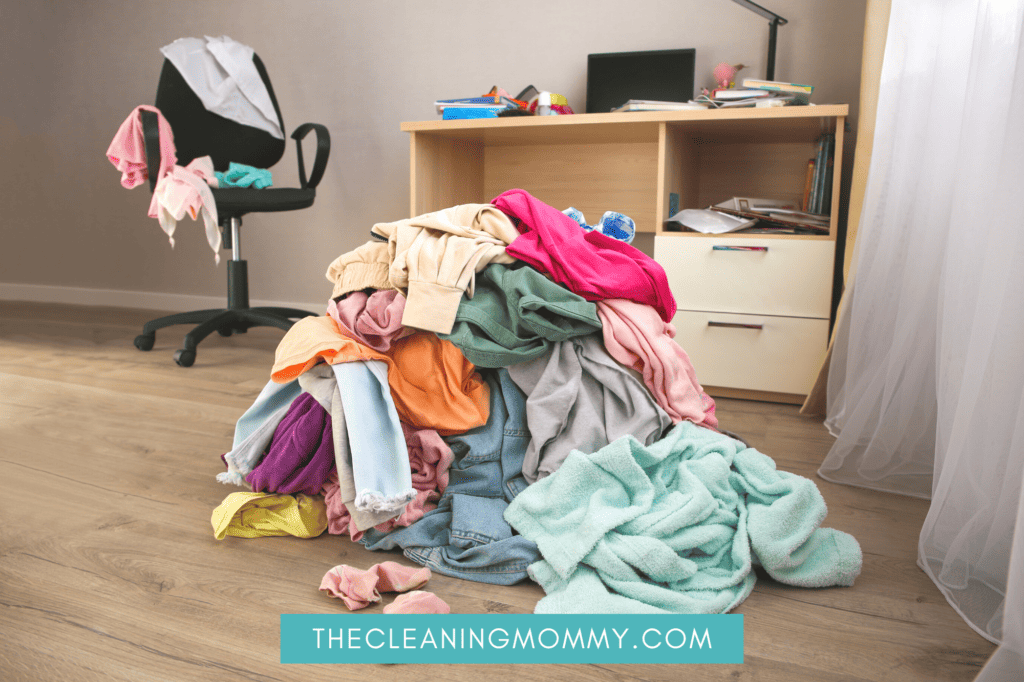
How to Stop Clutter In Your Home
#1 Start small
When you start working towards living clutter free, the most important thing to do is to start small.
If you try to attack your whole house in one go, you will feel overwhelmed straight away.
Instead, choose one small area or room to organize first. Achieve success and satisfaction by building momentum and witnessing progress. Then, devise a practical plan to tackle the remaining tasks in your home, breaking them down into manageable steps.
This could include setting specific days and times to declutter each area, making the process feel more structured and controlled.
By having a decluttering plan, you are more likely to stick to your decluttering goals, which will help you to maintain a clutter free home.
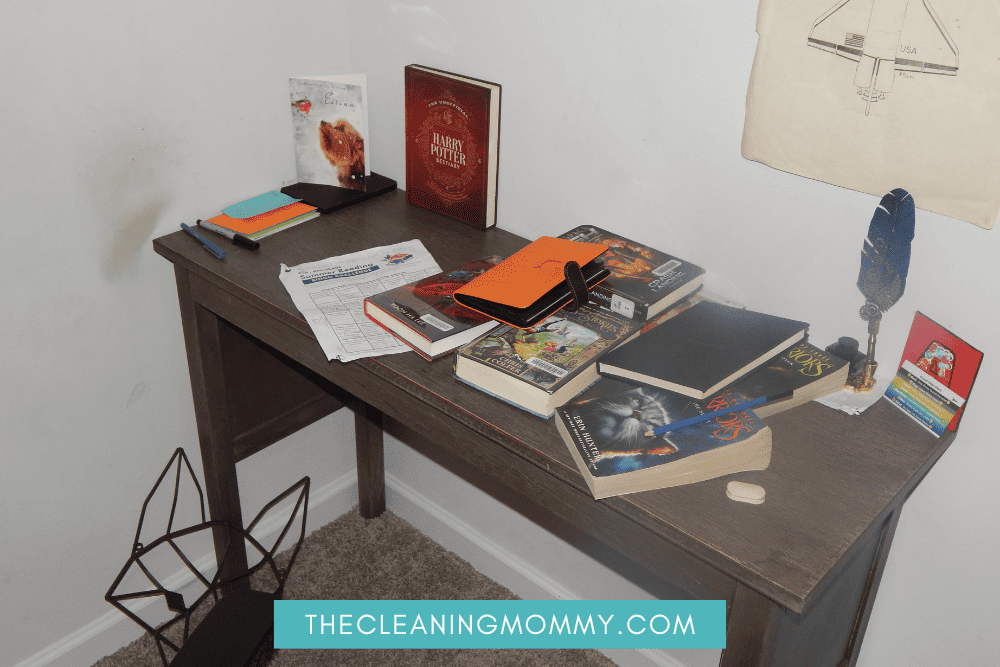
#2 Start using the “one in. one out” rule.
For every new item that enters your home, make it a habit to remove an existing item. This prevents the accumulation of too much stuff and helps you maintain a clutter free home.
When you purchase a new shirt, for example, consider donating or selling a shirt from your wardrobe that you no longer wear.
By consciously practicing this rule, you ensure that your home doesn’t become overwhelmed with excess belongings and too much stuff.
This works well with items like water bottles, sippy cups, towels, dishes etc.
#3 Sort and purge regularly
Set aside dedicated time each month to sort through your belongings and get rid of anything you no longer need or use. Start with one area or category at a time, such as your wardrobe, kitchen cabinets, the junk box, or a storage closet.
Assess each item and ask yourself if it still serves a purpose, brings you joy, or do you even use it.
If they don’t, decide if you want to donate, sell, or recycle these items to keep a clutter free home.
Regular purging in your life helps prevent a decluttered home and keeps your home organized with things and clothing you actually use in your daily life.
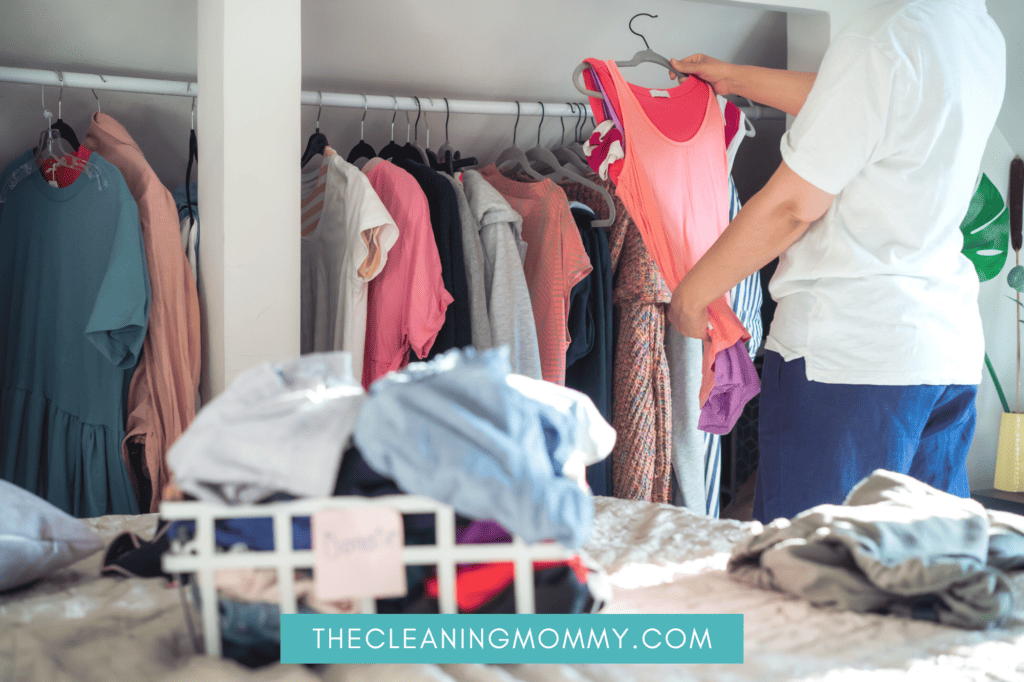
#4 Create designated spaces
Assign specific areas for different categories of items in your home. Having a place for everything reduces the likelihood of clutter piling up and makes it easier to find what you need.
Designate a spot for keys, a specific drawer for office supplies, and shelves for books or decorations. When you finish using an item, make a habit of returning it to its designated place.
I like the idea of having an organizer by the front door so you can drop your handbag and keys as soon as you walk into your house.
Doing this helps you maintains order and ensures that you can find things when you actually need them.
This is especially important when you have kids and toys in the house. Toys should have a place to go, whether it’s in a the kids room or a playroom.
Find storage solutions for books and toys that will fit your space. Wall shelves are a great way to use vertical space and keep small toys and books organized.
This is what I used when my kids were small and they worked brilliantly. I got mine at Target for cheaper than Amazon, I believe. The kids were great at putting things away in the little cube boxes. I didn’t careabout what went into each cube, just that the toys were put away at the end of the day,
#5 Adopt a daily cleaning routine
Invest 10 to 15 minutes each day to tidy up your living spaces. Set aside a specific time, such as in the morning or before bed, to do a quick clean-up.
Put items back in their designated places, wipe down flat surfaces, and clear any visible clutter off your kitchen counter.
Doing a little bit each day will help to maintain a clutter free home.
When you start decluttering a little bit each day, this will help you tremendously to keep your home tidy, your junk drawers under control and a more simplified home.
When your physical clutter is to a minimum, and you are living clutter free, you will start to really enjoy living in a minimalist home.
#6 Adhere to the “five minute rule”
Have you heard of the five minute rule?
Take just five minutes to put things back where they belong when you see something out of place or not belonging in a certain area.
This simple rule prevents small messes from turning into overwhelming clutter and keeps your home clutter free.
If you see a pile of clothes on a chair, take a few minutes to fold or hang them.
When you come across misplaced items, resist the urge to leave them for later and invest a few minutes to get them to where they need to be,
When you incorporate this into your daily routine or weekly reset, you will find it easy to maintain a clutter free home.
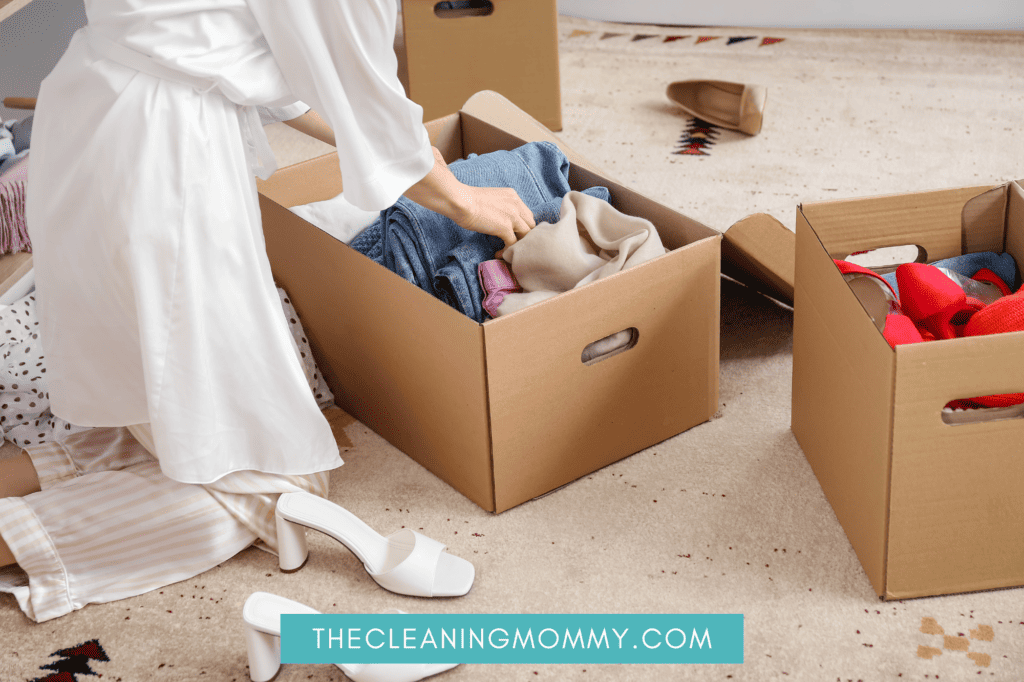
#7 Say no to impulse purchases
This gets all of us. I have been known to leave Hobby Lobby with umpteen bags of stuff when they have their huge sales!!! I’m not doing myself any good, but it’s hard to say no when Christmas decorations are 70% OFF!!!!!
I have weaned myself from doing this, because I came home several times only to find out that most of the new stuff I bought had nowhere to go!
So, I have some great tips so you don’t do what I did!
Before you actually buy something new, ask yourself if you genuinely need it and where will it go?
Do you have a place in mind for this item, or will it just end up becoming part of the clutter.
Impulse purchases often lead to accumulating items that serve no real purpose or value.
So the next time, you are about to buy something, really ask yourself if this is something you need, or is it just more physical clutter.
Create a clutter free house by making conscious purchasing decisions and avoid bringing unnecessary clutter into your home.
Your shopping habits may need to change! If you tend to go online shopping with a glass of wine at the end of a long day, you probably won’t make the best decisions, and you end up with excess stuff.
New habits will help to stop this cycle.
By applying these strategies in your own life, you’ll be well on your way to creating a more organized and clutter-free living space. Think how easier your house will be to clean it with less stuff in it.
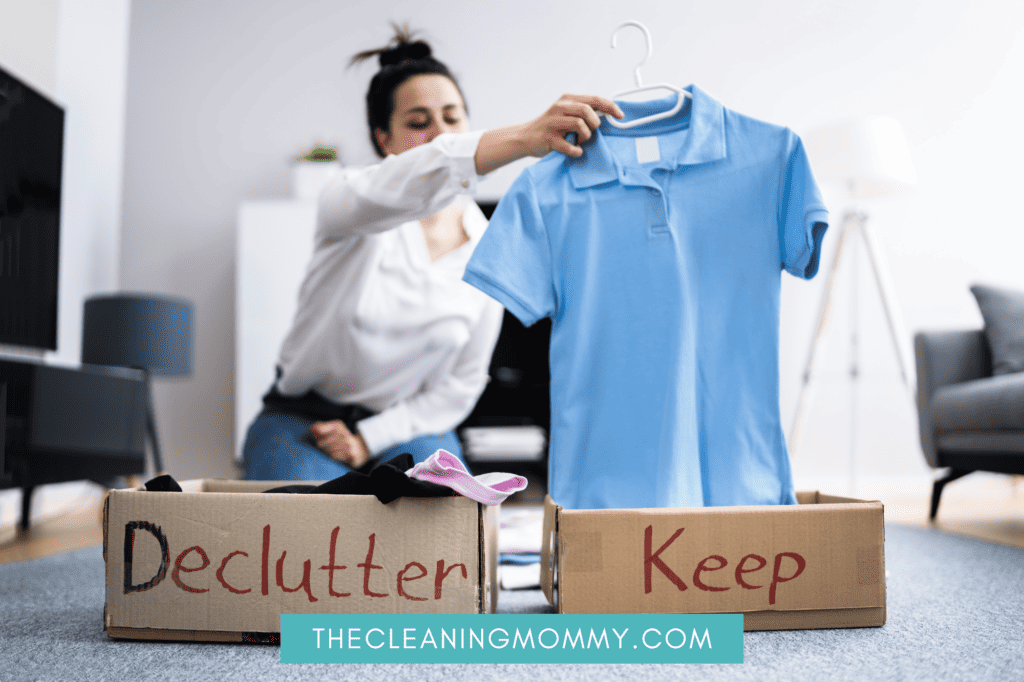
#8 Keep a donation box
Place a designated box or bag in a convenient location so you can collect items you want to donate. Keep it somewhere handy, like a hall closet so you can access it easily.
Whenever you come across something you no longer need or use, immediately place it in the donation box.
This works really well to get rid of clothes the kids have outgrown or toys they no longer use.
As soon as the box is full, take it to a local charity or donation center. This practice not only helps you declutter but it also benefits others in need.
Regularly donating items ensures that you live clutter free, your home remains clutter-free and supports a more minimalist lifestyle.
#9 Optimize storage solutions
Invest in storage containers, bins, shelves, and other organizational tools that maximize your storage space. Evaluate the storage options available in each room and identify areas where additional storage solutions could be useful (think craft supplies).
Look at buying pieces of furniture with built-in compartments or hidden storage to give you extra space for stuff.
Utilize under-bed storage, closet organizers, and vertical space to keep belongings neatly stored and easily accessible.

#10 Create a mail management system
Junk mail just adds more clutter to your house, I used to keep junk mail “just in case”, but not anymore!
Follow thse simple tips for keeping junk mail at bay.
As soon as the mail arrives at your house, have a specific area for sorting and processing it, such as a desk or your dining room table.
Sort the mail immediately, recycle any junk mail, and file important documents. This should take less than 5 minutes.
#11 Digitize documents
Before we bought an RV to travel the country, we used to keep boxes of tax documents etc, and I hated the sight of them in my home.
If you’re like me, think about scanning important documents, such as receipts, warranties, and manuals, and storing them digitally. This reduces paper clutter and makes your home clutter free.
Use document scanning apps or invest in a document scanner to convert physical papers into digital files. Organize these digital documents into folders on your computer or cloud storage, so you can easily access them.
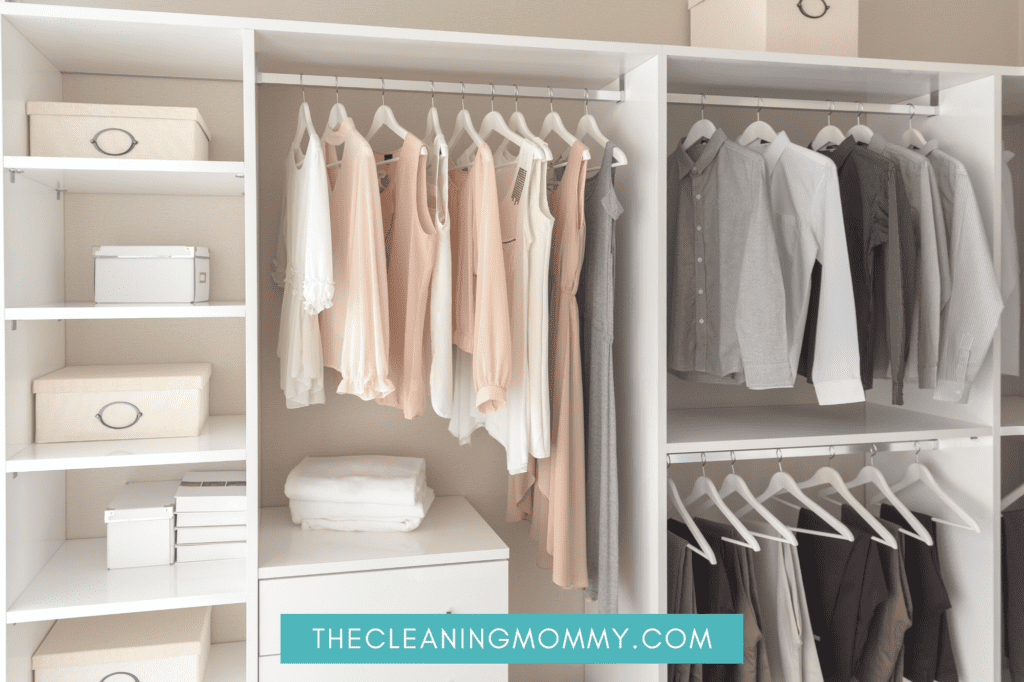
#12 Limit paper usage
Embrace digital alternatives whenever possible. Opt for e-statements, e-tickets, and online subscriptions to reduce the amount of physical paper coming into your home.
Request electronic versions of bills, opt for digital event tickets, and unsubscribe from unnecessary paper mailings.
By minimizing paper usage, you’ll reduce clutter and contribute to a more eco-friendly lifestyle.
I used to keep piles of to-go menus, but really there was no need, I could easily access the menu online. I got rid of these unneeded items from my junk drawer, and stopped the clutter building up.
#13 Create a dedicated “lost and found” space
Designate a designated spot, like a basket or tray, for items that are misplaced throughout the house. Remind family members to place these items in the designated area, making it simpler to return them to where they belong.
This simple habit prevents items from getting lost or forgotten and saves you time you don’t have to spend searching for misplaced belongings.. Make it a habit to check the “lost and found” area regularly to ensure items are promptly returned to their proper place.
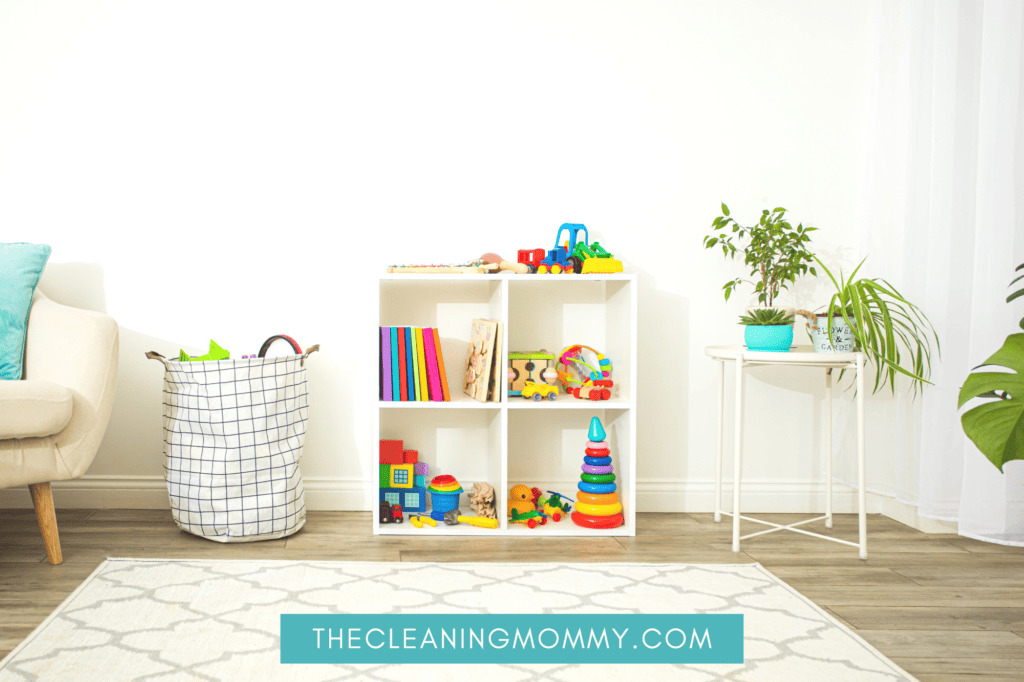
#14 Maintain a minimalist mindset
Embrace a minimalist philosophy and be mindful of what you bring into your home. Focus on quality over quantity and surround yourself only with items that you really want and that serve a purpose.
Regularly assess your belongings and let go of anything that no longer aligns with your values or contributes to your happiness.
Adopting a minimalist mindset encourages a clutter free home and helps you create a space that reflects your true priorities. When you have excess stuff in your home, your life starts to become cluttered.
#15 Get rid of excess items
If you were to look in your closet right now, how many pairs of jeans do you have? How many spatulas do you have in your utensil drawer?
I have 2 and I use both! But before moving into an RV, I probably had4-5!
Did I use them all – NO.
Start getting rid of excess items you have – water bottles, glasses, dishes you don’t use. Doing this will open up a lot more cabinet space for you, as well as room in your closet, medicine cabinet etc.
When we get rid of all the excess in our lives, we can easily maintain a clutter free home.
#16 Set realistic expectations
Recognize that maintaining a clutter-free home is an ongoing process. Avoid striving for perfection and instead aim for progress.
Consistent small efforts are more effective than occasional large-scale cleanouts. Accept that some areas may occasionally become cluttered or disorganized, but commit to taking care of them when you notice you have too much stuff.
Make a mental note to start decluttering a few minutes every day to get rid of stuff. By setting realistic expectations, you won’t feel overwhelmed, and you’ll be able to maintain a tidy home and live clutter free in the long run.
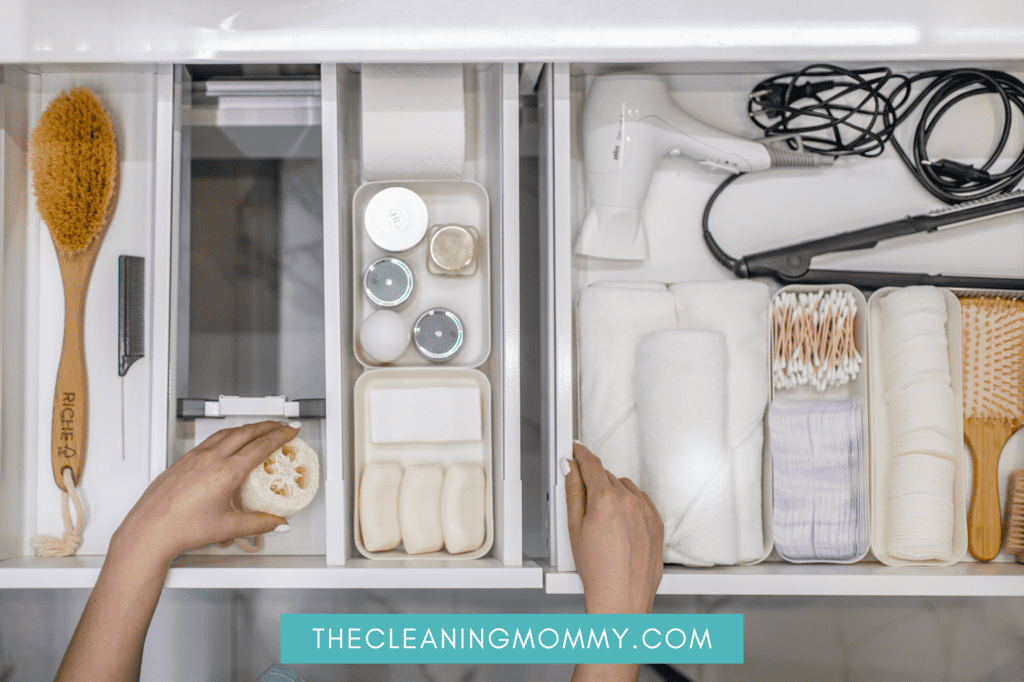
#17 Practice the “one-touch” rule
Whenever possible, handle an item only once. Avoid placing it in a temporary location or adding it to a “to-do” pile. Instead, put it back where it belongs immediately to maintain order.
For example, when you finish using a kitchen utensil, wash it and return it to its designated spot, or when you come in your front door, hang your keys exactly whhere they should go.
By following the “one-touch” rule, you minimize the chances of clutter accumulating in your house and create a habit of tidiness and efficiency.
If possible, remind your kids to do the same so things don’t get lost.
#18 Avoid using common areas as storage
Common areas with flat surfaces like countertops, side tables, and dressers easily attract clutter. Resist the temptation to use them as dumping grounds for stuff coming into your house. Keeping flat surfaces clear will have a tremendous impact on keeping your home clutter free and stop clutter from taking over.
By following these great tips, you’ll be well on your way to maintaining a clutter-free and tidy home.
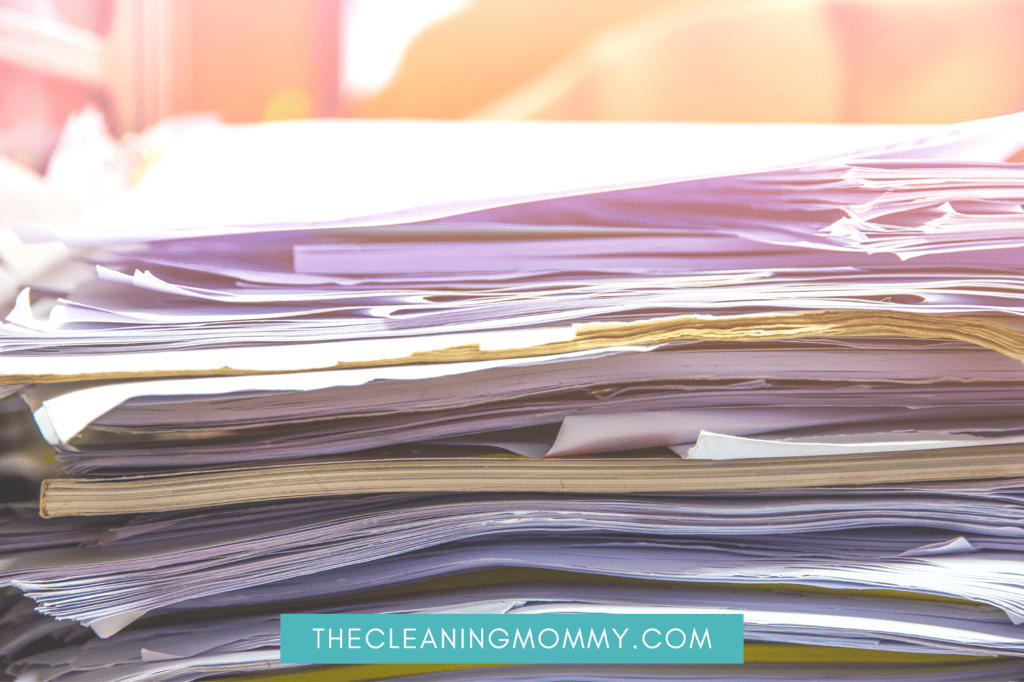
#19 Create a shoe drop zone
Place a shoe rack or shoe cabinet near your entryway to encourage family members and guests to remove their shoes upon entering. This prevents dirt and clutter getting into your home.
When we moved into our current home, I purchased a shoe storage organizer and put it in the garage, so when we come into our house, the kids have a place to put their shoes immediately.
Putting things in the right place is not easy for most people, but especially kids, but if you keep reminding them to take their shoes off and put them in their proper place you can maintain a clutter free home.
#20 Tackle one room at a time
If your whole house feels overwhelmingly cluttered, start by decluttering one room at a time.
Break the task into manageable chunks, and celebrate your progress as you go along.
Begin with the room that bothers you the most or the one that will have the biggest impact on your daily life when organized.
Dedicate some focused time and effort to decluttering and organizing each room, sorting through items, and deciding what to keep, donate, or discard. By tackling one room at a time, you’ll see visible improvements and gain momentum throughout the decluttering process.
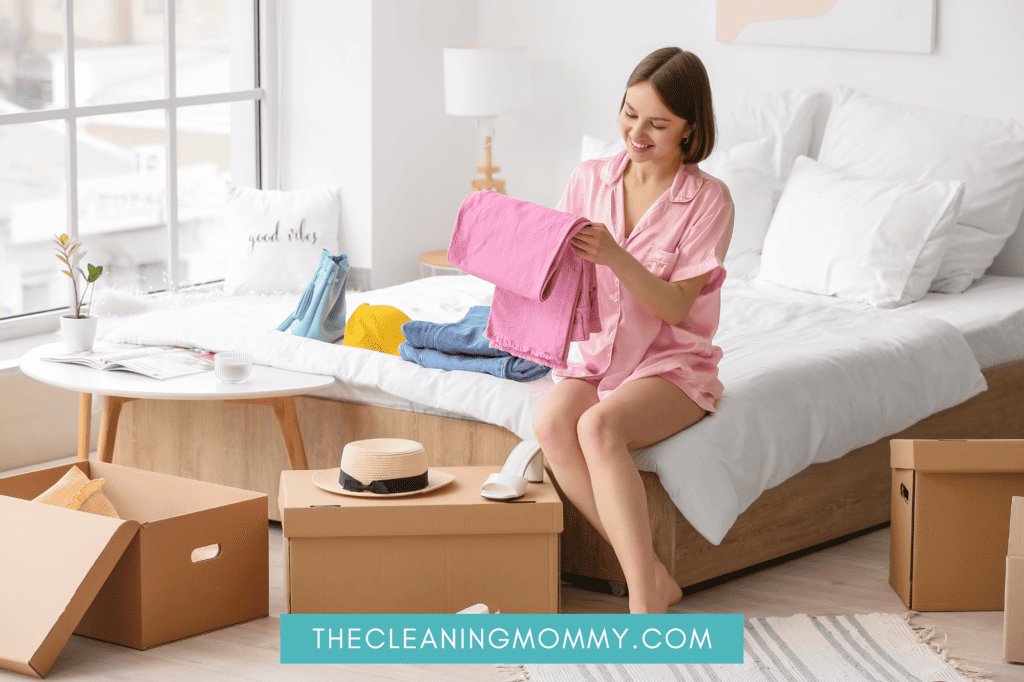
#21 Label containers
Labeling containers, shelves, and drawers helps you and your family members quickly identify where items belong. Invest in a label maker or use adhesive labels to mark different storage areas.
Clearly label boxes in storage areas, pantry items, and clothing drawers. When everyone knows where things should be, it’s easier to maintain an organized and clutter-free home.
#22 Regularly go through sentimental items
Sentimental possessions can accumulate over time, leading to a lo of clutter. Take some time every month to take a look at these items and keep only the ones that hold significant meaning.
Consider digitizing sentimental objects, such as photographs, letters, or children’s artwork, to reduce physical clutter while preserving their sentimental value.
Choose a select few sentimental items to display or store in a special memory box, and let go of the rest.
By consciously managing sentimental items, you create space for the present and avoid excessive clutter.
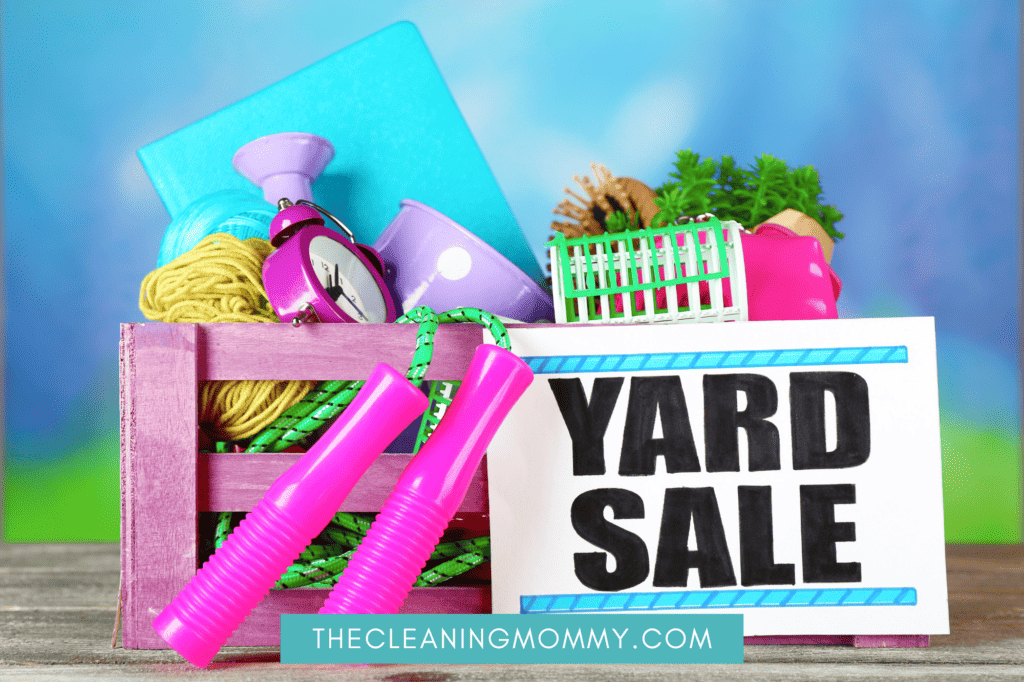
#23 Implement the “five-box method”
When tackling a decluttering project, use five boxes labeled: “Keep,” “Donate,” “Sell,” “Trash,” and “Rehome.”
Streamline your decluttering process with this efficient method.
Sort through items and place each one in the appropriate box. Keep items you want to keep in your home, donate items to charity, sell items you can sell, discard items that are no longer usable, and return items that belong to someone else in the rehome box.
You will save time and make decisions more efficiently with this organized approach.
#24 Involve the whole family
Keeping a clutter-free home is a team effort. Encourage your family members to adopt tidy habits and take responsibility for their own belongings.
Delegate age-appropriate organizing tasks to children to instill good habits from a young age. Teach them how to sort and organize their toys, books, and clothing.
Create a system that encourages everyone to tidy up after themselves and hold each family member accountable for their belongings.
Each evening, have the kids spend 15 minutes picking up toys and putting them in their proper place.
When they bring in new stuff, like a new toy or a stuffed animal, encourage them to let something else go, so the clutter doesn’t build up.
By involving the whole family, you create an environment where everyone participates in maintaining a clutter-free home.
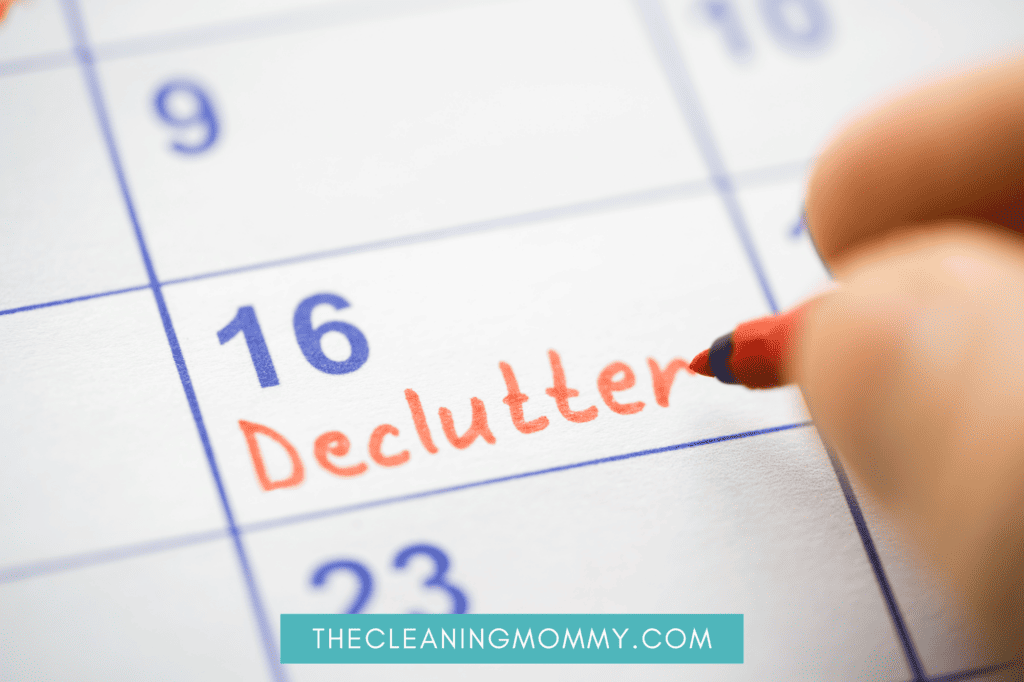
#25 Prioritize maintenance
Regularly maintain organized spaces by conducting mini decluttering sessions and quick tidy-ups. Preventing clutter from building up is more efficient than dealing with a major decluttering project later.
Dedicate a few minutes each day or set aside a specific day of the week to go through different areas of your home and address any potential clutter. Return items to their designated places, recycle or discard unnecessary items, and keep surfaces clear.
By prioritizing maintenance, you’ll spend less time and effort on major cleanups and enjoy a consistently clutter-free environment.
#26 Practice mindful consumption
Be mindful of your shopping habits. Consider borrowing items that you will only use occasionally instead of purchasing them. I see a lot of people asking to borrow items like a ladder or power washer in our neighborhood.
This makes more sense than going out and buying soemthing you may only use a couple of times per year.
Focus on experiences and memories rather than accumulating material possessions. Instead of getting the kids more toys they don’t need, think about getting tickets to a show, or going ziplining.
Take a more mindful approach to shopping to avoid clutter and keep your home organized.
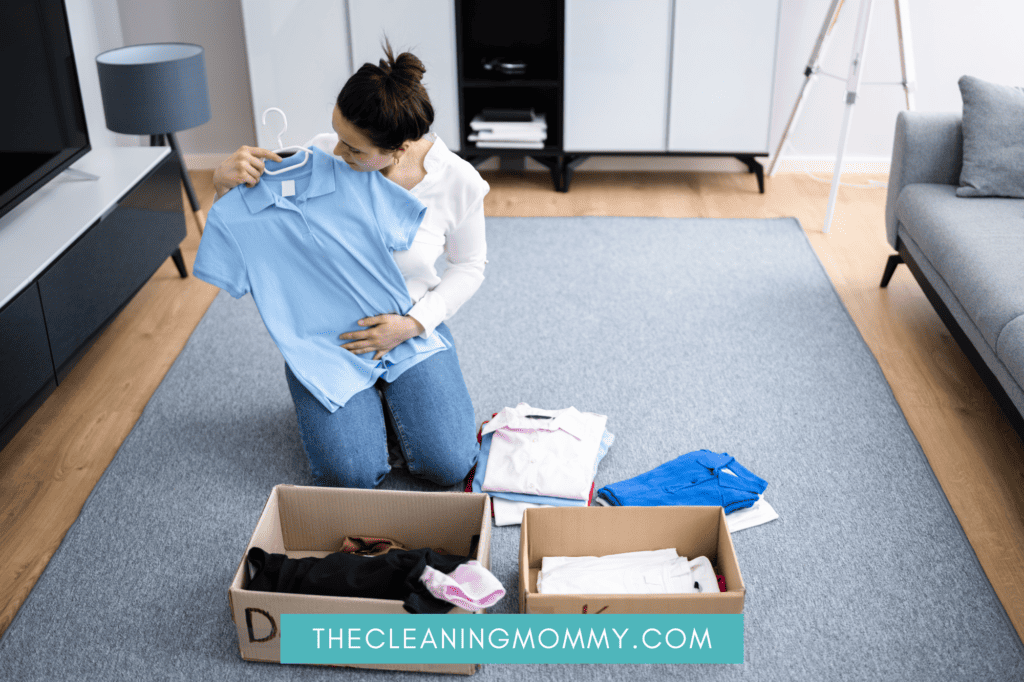
#27 Celebrate progress
Acknowledge and celebrate your achievements as you maintain a clutter free home. Recognize the positive impact it has on your life and use it as motivation to continue to keep your home clutter free by prioritizing organization and simplicity.
Take a moment to appreciate the clear surfaces, organized spaces, and reduced stress that come with clutter free living.
Reward yourself and your family for successfully adopting clutter-free habits. Praise the kids on what a good job they are doing. Treat them to some ice cream and show them what a difference their help has made to help main a clutter free home.
Achieving a clutter-free home is possible with a lot of determination, some intentional habits, and a change in mindset.
Follow these 25 practical tips and learn how to maintain a clutter free home. Adopt these clutter-free habits to create a tranquil and organized living space that enhances your overall well-being, productivity, and happiness.
Remember, every small step counts and leads to a remarkable transformation. Embrace the journey towards a clutter-free home and relish the advantages of an organized and peaceful living environment.
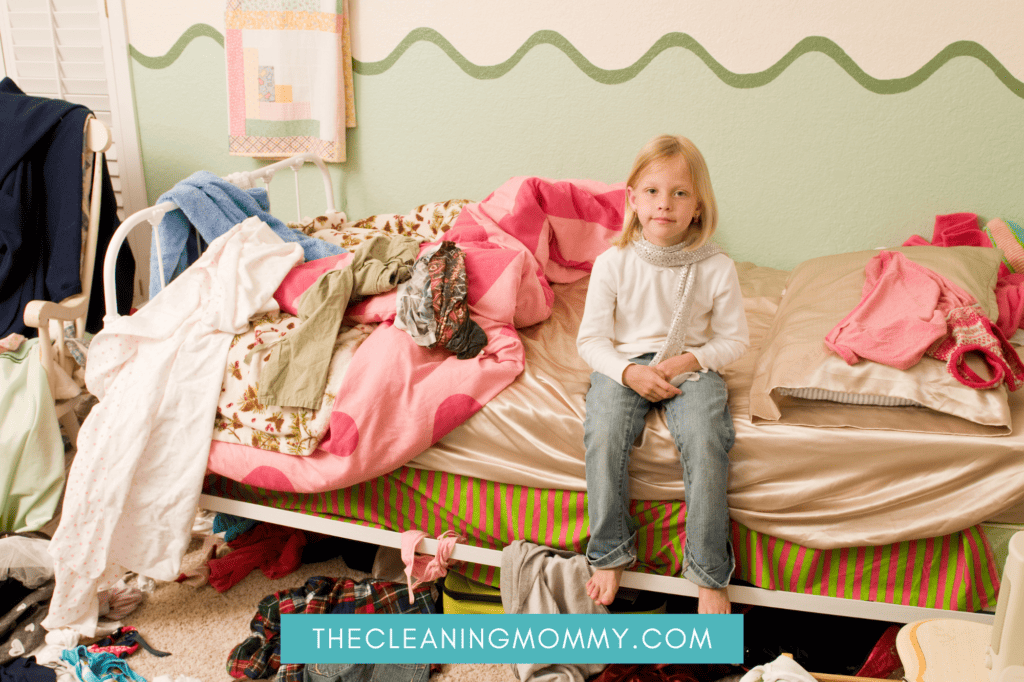
I hope my ultimate guide to living a clutter-free lifestyle will show you how to keep a clutter free home and to maintain a clutter free home moving forward,
If you have anything to add to the above tips, I’d love to hear them in the comments below.
Other Cleaning Articles You May Like:
- How to start decluttering when overwhelmed
- Decluttering tips for hoarders
- Quotes about declutter
- Declutter qyour home with this checklist
- Get your kitchen countertops clutter free by doing this!
- Easy things to declutter
- Dusting hacks for the home
- How to start decluttering when your spouse doesn’t want to
- How to clean ghosting on walls and ceilings
- 5 minute genius cleaning tasks

Grainne Foley
Grainne Foley is a wife and mother of 2 great kids. During her 5 years of full time RV travel, Grainne learned to become very efficient at household chores, in order to make time for family adventures. Now, back in a house, she has continued to create tools and techniques to help others lighten the load of household organization and cleaning.
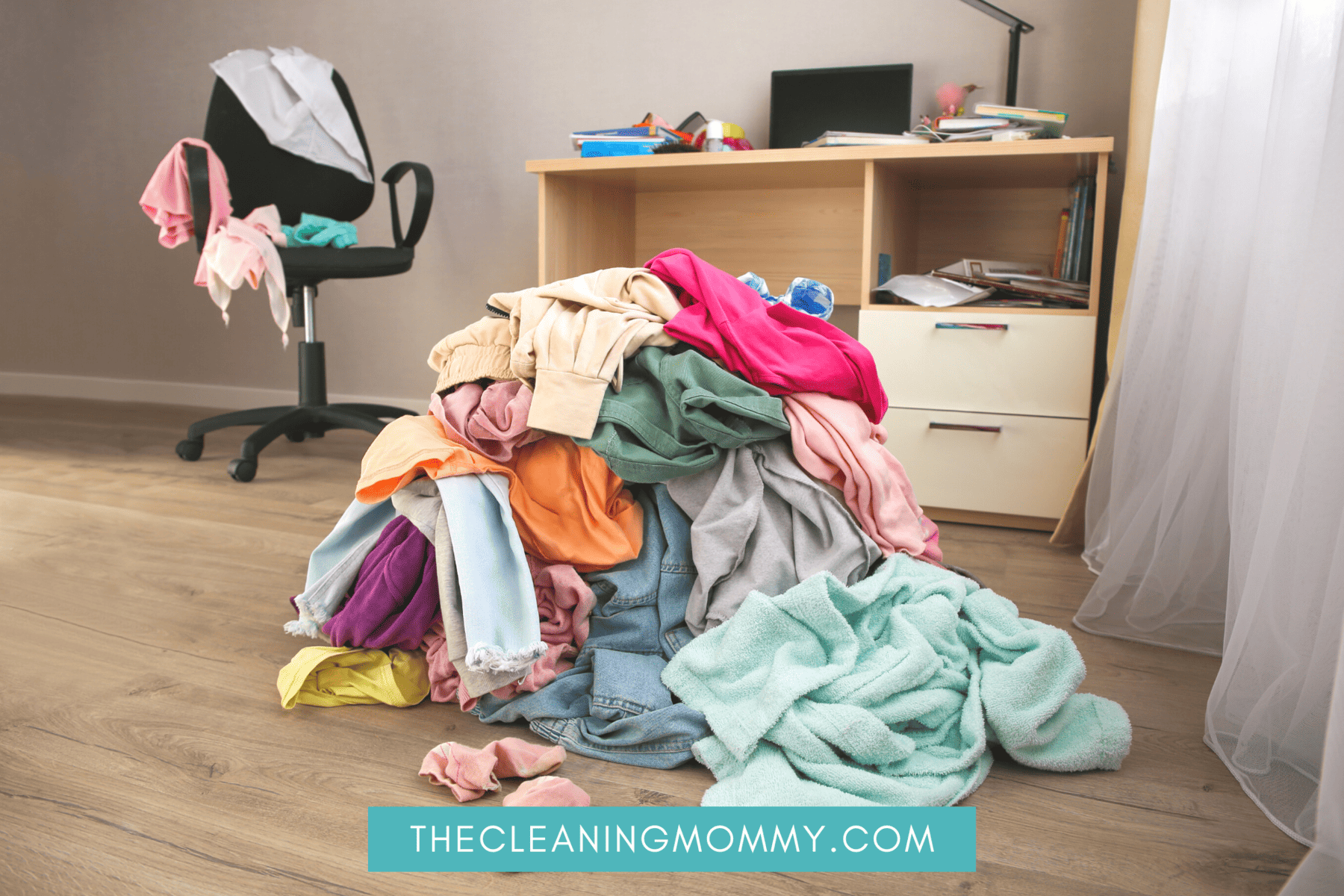
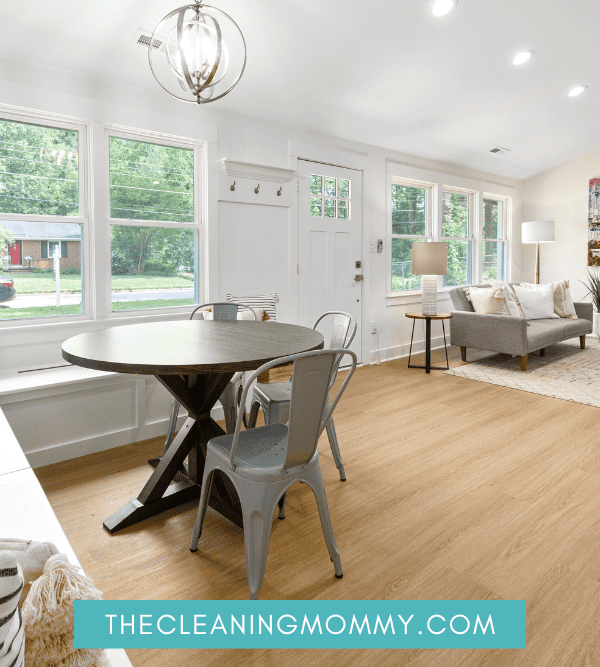
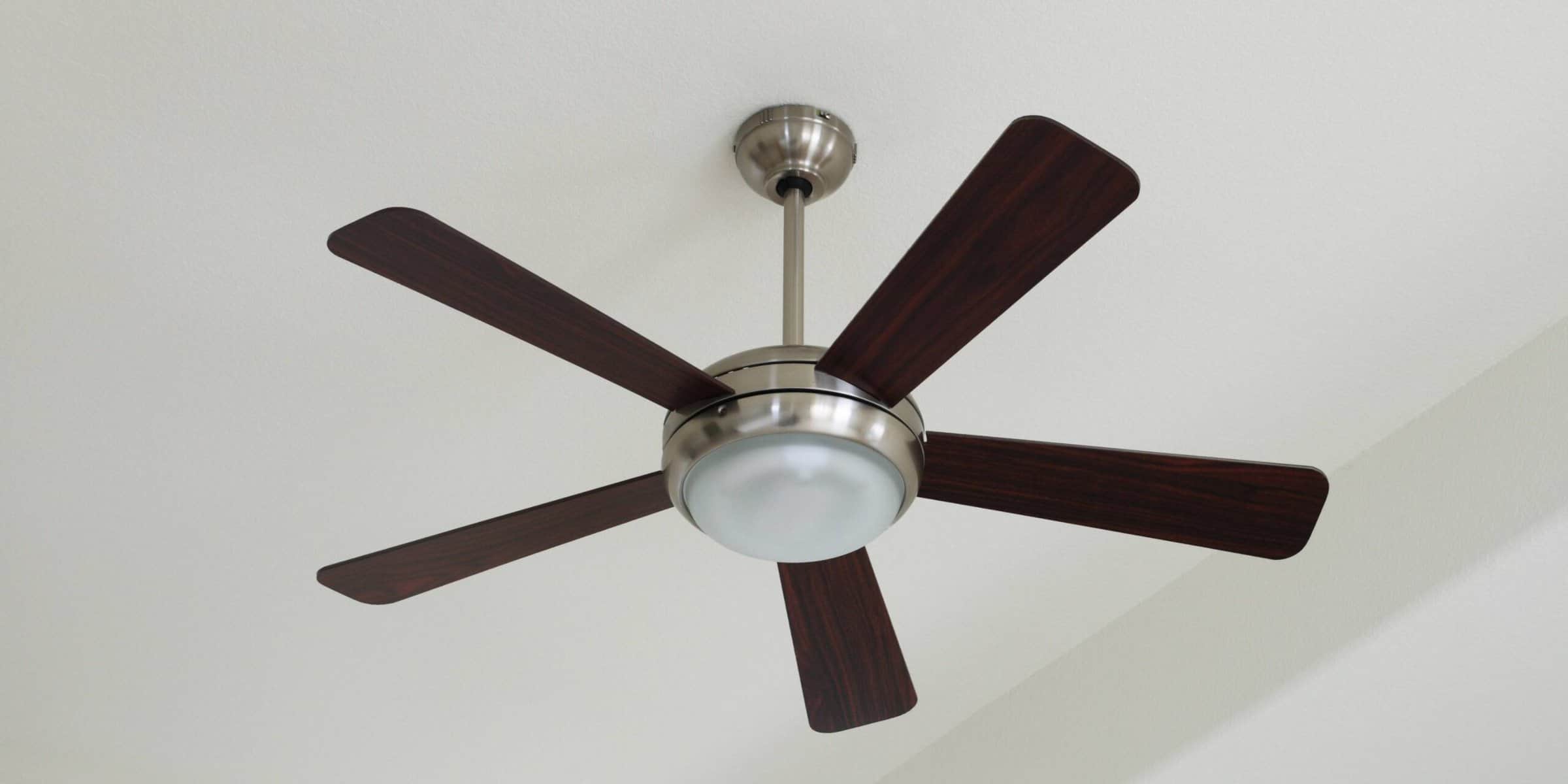

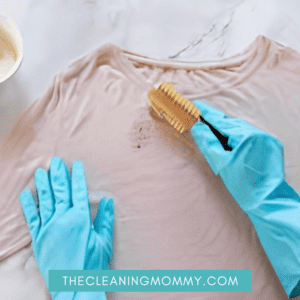
Leave a Reply